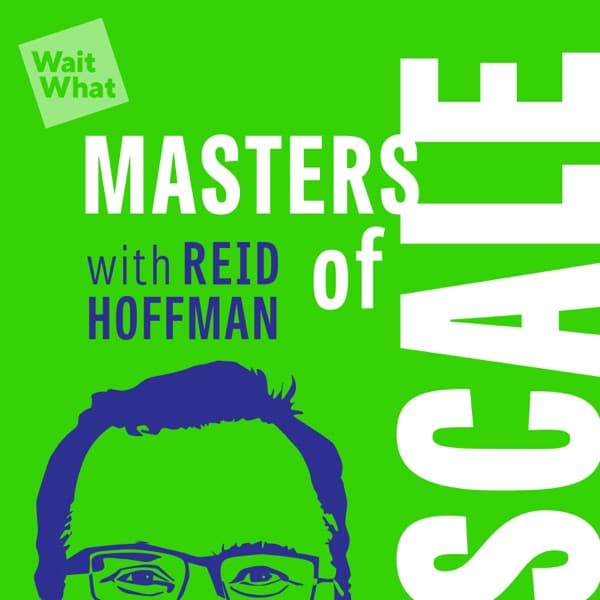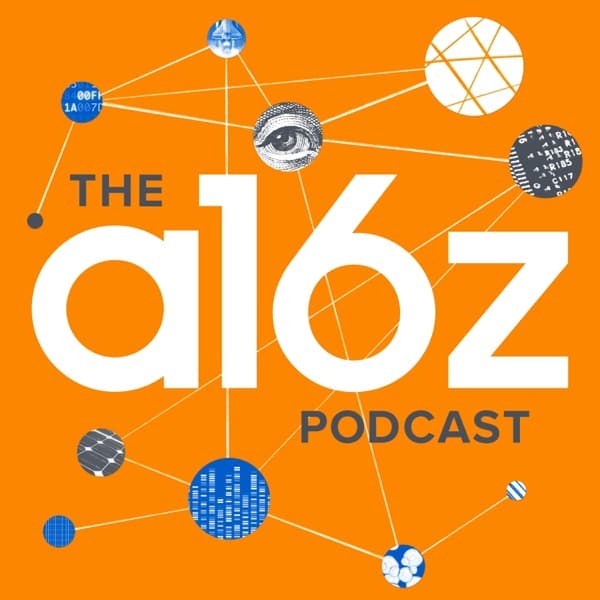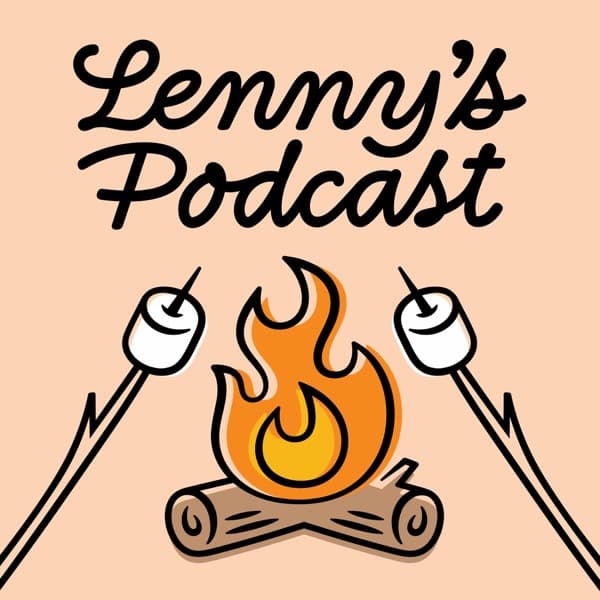The Twenty Minute VC (20VC): Venture Capital | Startup Funding | The Pitch: Monzo's turnaround from financial struggles to becoming a leading UK digital bank with 10 million customers and a billion in revenue is explored.
Anthropic: The discussion focuses on defining and differentiating AI agents from workflows, emphasizing the autonomous nature of agents and their practical applications in coding and search tasks.
OpenAI: A humorous exploration of a fictional forest with talking creatures, highlighting the absurdity of human interactions with nature.
Modern Wisdom: The discussion explores the complexities of bullying, focusing on power dynamics, motivations, and the impact on victims and bullies.
How I Built This with Guy Raz: The podcast episode features business advice from Guy Raz and Travis Boersma, focusing on scaling businesses and overcoming challenges.
Masters of Scale: Atio is an AI-native CRM designed for modern businesses, offering scalable solutions and AI-powered automations.
TechCrunch Startup News: Chestnut Carbon raises $160 million to expand carbon credit projects by transforming degraded farmland into forests.
TechCrunch Startup News: Voyantis uses AI to predict customer lifetime value and optimize marketing strategies.
The Twenty Minute VC (20VC): Venture Capital | Startup Funding | The Pitch - 20VC: Monzo: The Greatest Turnaround in Tech: From £40M Revenues, Layoffs, Downrounds and Low Employee NPS to $1BN in Revenue, Profitable and 10M Customers with TS Anil, CEO @ Monzo

The discussion highlights Monzo's transformation under TS's leadership, focusing on overcoming initial challenges like a 40% down round, limited runway, and low employee morale. TS emphasizes the importance of a strong mission and product-market fit, which helped Monzo navigate financial difficulties and regulatory challenges. The conversation also covers Monzo's strategic decisions, such as not engaging in cryptocurrency trading to maintain customer trust, and the importance of sequencing product offerings based on customer needs and market conditions. TS discusses Monzo's expansion plans, particularly in the US and Europe, and the challenges of maintaining a mission-driven approach while scaling the business. The interview also touches on Monzo's financial strategies, including revenue diversification and the importance of customer engagement and trust in driving growth.
Key Points:
- Monzo's success is attributed to strong leadership, a clear mission, and product-market fit.
- Strategic decisions, like avoiding crypto trading, align with Monzo's mission to build customer trust.
- Monzo plans to expand internationally, focusing on Europe and the US without a banking license.
- Revenue diversification is key, with a focus on transaction-based fees and customer engagement.
- Maintaining a mission-driven approach is crucial for Monzo's growth and customer loyalty.
Details:
1. 🎙️ Introduction to 20VC with Harry Stebbings
1.1. About 20VC and Harry Stebbings
1.2. Episode Highlight on Major Tech Turnaround
2. 🚀 Monzo's Remarkable Turnaround Journey
- Monzo faced a challenging period with a 40% down round, significant layoffs, and a negative employee Net Promoter Score (NPS), with revenue at merely 40 million.
- Under new leadership, Monzo implemented strategic changes that led to a dramatic transformation.
- The bank has grown to serve 10 million customers, becoming the leading digital bank in the UK.
- Monzo's revenue has reached a billion, marking a substantial financial turnaround and demonstrating effective growth strategies.
- Achieving profitability was a key milestone, underscoring Monzo's successful turnaround from its prior financial struggles.
- Leadership changes focused on innovation and customer-centric strategies, significantly contributing to growth and customer acquisition.
- Monzo's strategic focus included enhancing digital services and expanding market presence, which played a crucial role in its transformation.
3. 🏛️ Harvard Management and Building Partnerships
3.1. Introduction to the Episode
3.2. Harvard Management Company Overview
3.3. Historical Influence in Venture Capital
3.4. Partnership Opportunities
4. 🔐 SecureFrame: Simplifying Security and Compliance
- SecureFrame simplifies information security, enabling businesses to build trust with customers by providing streamlined security and compliance solutions.
- Partnerships with top-tier entities like Harvard enhance credibility and trustworthiness, positioning SecureFrame as a leader in security solutions.
- SecureFrame serves as a valuable partner for both new and established managers, offering tools and strategies to enhance their security and compliance efforts.
- The platform helps reduce the complexity of security management, allowing businesses to focus on growth while maintaining robust security measures.
- SecureFrame's solutions are designed to be scalable, accommodating the needs of businesses as they expand and face more complex security challenges.
5. 🏆 SecureFrame's Recognitions and Impact
- SecureFrame accelerates compliance for global security and privacy standards like SOC 2, ISO 27001, CMMC, and NIST, trusted by companies such as NASDAQ, AngelList, Doodle, and Coda.
- The company is supported by leading investors including Google and Kleiner Perkins, underscoring its credibility and financial backing.
- SecureFrame is recognized as one of Forbes' top 100 startup employers for 2024, highlighting its reputation as a desirable workplace.
- It received G2's best software awards for highest satisfaction products, indicating strong customer approval and product effectiveness.
6. 🔄 Roam: Innovating the Digital Workspace
6.1. Recognition and Impact
6.2. Features and Functionality
7. 💡 TS on Leading Monzo Through Challenges
- Monzo faced a 40% down round and high engineering attrition upon leadership transition, with low employee NPS and running out of capital.
- Despite challenges, the product had strong market fit, resonating well with users even as COVID-19 exacerbated revenue issues by dropping revenues and delaying monetization.
- The new leadership aimed to reinvent financial services, seeing incumbents as unlikely to achieve necessary transformation.
- Strategic focus was placed on boosting employee morale, stabilizing capital, and accelerating monetization to align user growth with revenue.
- Implemented strategies led to improved employee retention and renewed investor confidence, setting a foundation for sustainable growth.
8. 🔄 Navigating Monzo's Product and Market Strategy
8.1. Interlocking Challenges and Strategic Approach
8.2. Product Momentum
8.3. Regulatory Strategy and Company Growth
9. 📊 Balancing Mission with Product Development
- Monzo deliberately chose not to engage in cryptocurrency trading as it was not aligned with their mission to prioritize customers' long-term financial interests.
- The decision to avoid offering cryptocurrency trading was based on the belief that it could undermine customer trust and financial understanding.
- Monzo aims to eventually offer a full range of asset classes, but intends to prioritize customer education and understanding before introducing complex financial products.
- The company identified two main barriers for UK customers in investing: the perception that investing is only for the wealthy and a lack of understanding of investing.
- Monzo addressed these barriers by introducing educational resources within their app and allowing investments starting at as little as one pound.
- The strategy aims to encourage their 10 million customers to begin making informed, long-term investment decisions.
10. 📈 Sequencing and Diversifying Revenue Streams
10.1. Initial Focus on Mutual Funds and ETFs
10.2. Comprehensive Financial Services
10.3. Mortgage Strategy and Front-end Differentiation
10.4. Business Model and Product Differentiation
11. 🤝 Mission-Driven Commercial Strategy
11.1. Gambling Block Feature
11.2. Mission and Commercial Synergy
11.3. Customer Engagement and Growth
11.4. Consolidated Financial Management
11.5. ARPU Comparison
12. 📊 Understanding Monzo's Revenue Model
- Monzo's revenue is divided into three equal parts: one-third from transaction-based revenues (interchange, FX), one-third from on-balance sheet lending (unsecured loans, overdrafts), and one-third from 'good fees' such as subscriptions and interest margin on savings products.
- Monzo attempted to expand into energy switching but withdrew due to market changes, emphasizing the importance of staying close to customer needs and being flexible in dynamic markets.
- Product development at Monzo focuses on high conviction initiatives with clear short-term and long-term goals, exemplified by launching a subscriptions product within four weeks and investing in long-term development of their borrowing business.
- Monzo prioritizes building capabilities for scale, such as world-class underwriting tools and improved customer journey understanding, even if these require longer lead times.
13. 🔄 Leadership and Alignment in Banking
13.1. Control Debt in Scaling Companies
13.2. Ownership of Business Processes
13.3. Empowerment and Alignment in Management
13.4. Strategic Alignment in Product and Tech Decisions
14. 🌍 International Growth and Expansion Plans
14.1. False Binary in Business Positioning
14.2. Mission and Business Plan Alignment
14.3. Transparency in Customer Fees
14.4. Balancing Monetization with Mission
14.5. Future Monetization Strategies
14.6. Strategic Market Presence in the UK
15. 🛠️ Challenges and Opportunities in US Fintech
15.1. International Expansion
15.2. US Market Strategy
15.3. Regulatory Challenges
15.4. Alternative Entry Strategy
15.5. Fragmented Market and Growth Challenges
16. 🔍 Finding the Right Product Entry Points
16.1. Importance of Entry Points
16.2. Discovery Phase
16.3. Strategic Questions
16.4. Credit as a Hypothesis
16.5. US vs. Europe Expansion Strategy
16.6. Long-term Strategy
17. 🌍 Expanding Monzo's European Footprint
17.1. Resource Allocation
17.2. European Market Strategy
17.3. Ireland as Entry Point
18. 📈 Importance of Customer Engagement and Trust
18.1. Strategic Challenges in European Expansion
18.2. Engagement and Trust: Core Metrics
19. 📈 IPO Considerations and Market Strategy
19.1. Building Trust and Love in Financial Services
19.2. Product Development and Market Entry
19.3. IPO Timing and Strategy
19.4. Regulatory Challenges and Going Public
20. 🏃 Leadership Dynamics and Founder Influence
20.1. Leadership Dynamics
20.2. Strategic Decisions on Going Public
20.3. Founder Influence and Leadership Approach
21. 🌟 Navigating Fundraising and Investor Relationships
- Entering the CEO role involved overcoming challenges related to age and credibility, highlighting the need for different strategies to build trust among investors.
- The company successfully raised three funding rounds, with the first being particularly challenging, securing £250 million quickly after a down round.
- The most recent round was notably easier, raising $650 million, supported by a clear trajectory of doubling revenue and strong customer engagement metrics.
- Investors were particularly receptive to metrics indicating higher ARPU and revenue stickiness, which were pivotal in securing funding.
- The CEO emphasized the importance of selecting quality investors, focusing on long-term partnerships that align with the company's growth objectives.
22. 💬 Insights and Reflections on Leadership
22.1. Strategic Shift to Institutional Investors
22.2. Product Viability and Closure
22.3. Addressing Skepticism and Growth Ambitions
22.4. Personal Challenges in Leadership
23. 🌟 Personal Insights and Motivation
- The speaker is driven to build a globally impactful fintech company, targeting benefits for customers, economics, and employees.
- They emphasize the weight of unmade decisions, using the example of deciding on an IPO, highlighting its heavy impact until resolved.
- Apple is praised as a favorite brand for its design and trust, illustrating the importance of brand value and customer perception.
- The speaker expresses concern about the lack of kindness and curiosity in today's judgmental society.
- An anecdote about taking two years to acquire a good coffee machine at Monzo underscores the slow decision-making process, humorously noting they'd bring their own next time.
- During COVID, the speaker worked from San Francisco with family, starting work at 2 or 3 AM to align with London time, reflecting on the challenges and 'type one and type two fun' associated with this lifestyle choice.
24. 📚 Stories of Resilience and Culture at Monzo
- Monzo's resilience is evidenced by its ability to turn challenging phases into 'type two fun', a concept where tough experiences transform into valuable stories.
- In 2020, Monzo faced significant hurdles in raising capital, with near misses turning into learning experiences that highlighted the personal nature of these endeavors.
- Monzo successfully merges high-ambition growth with a values-oriented culture, rejecting the notion that these are mutually exclusive.
- The company's dedication to a customer-focused ethos is part of its cultural DNA, emphasizing the importance of building the right product over focusing purely on metrics like ARPU.
- Monzo's strategic growth is exemplified by its increase in valuation from 40 million to one billion and achieving profitability, highlighting the success of its cultural and strategic approach.
- Leadership, including co-founders and key executives, plays a crucial role in fostering a culture valuing its people and emphasizing collaborative success.
- Specific anecdotes, such as humorous recollections of challenging investor meetings, illustrate the company's resilience and adaptability in real-world scenarios.
25. 🔄 Evolution of Leadership at Monzo
- Monzo's leadership has consistently elevated its ambition, adapting to new challenges and ensuring continuous progress.
- The team has strategically increased its goals at each business inflection point, avoiding rigid adherence to a static vision.
- Leadership focuses on the next steps and future challenges, akin to rock climbing, where the aim is to reach the next ledge.
- The approach involves bending the curve upwards at pivotal moments, ensuring the company does not become complacent.
Anthropic - Tips for building AI agents
The conversation explores the concept of AI agents, distinguishing them from workflows by highlighting their autonomy in decision-making. Agents are defined as systems that allow AI models to determine the number of steps needed to complete a task, unlike workflows which follow a predetermined path. The discussion emphasizes the importance of understanding the context and providing clear instructions to AI models to improve their performance. Practical applications of agents are discussed, particularly in coding and search tasks, where agents can automate repetitive tasks and scale operations. The conversation also touches on the future potential of multi-agent systems and the challenges of implementing agents in consumer applications due to the complexity of specifying preferences and verifying outcomes.
Key Points:
- AI agents are autonomous systems that decide their own steps, unlike workflows which follow a set path.
- Clear instructions and context are crucial for effective agent performance.
- Agents are particularly useful in coding and search tasks, where they can automate and scale operations.
- Multi-agent systems hold potential for future applications, though current focus is on single-agent success.
- Consumer applications of agents are challenging due to complexity in specifying preferences and verifying outcomes.
Details:
1. 🎙️ Introduction and Overview
- Agents for consumers are currently overhyped, suggesting there might be a gap between expectations and actual functionality.
- Using an agent to fully book a vacation is almost as difficult as doing it manually, indicating a need for improved efficiency in agent capabilities.
- The segment will discuss insights from a recent blog post on building effective agents, suggesting a focus on practical strategies and methodologies.
- Key contributors from Anthropic, including Alex, Erik, and Barry, will share their perspectives and expertise, highlighting a collaborative approach to the topic.
2. 🤖 Defining Agents vs. Workflows
2.1. Defining Agents and Workflows
2.2. The Evolution and Adoption of Agents
3. 🔍 Practical Applications and Challenges
3.1. Workflow Prompts
3.2. Agent Prompts
4. 🎭 Behind the Scenes: Stories and Insights
4.1. Agent Behavior and Empathy
4.2. Effective Prompt Engineering
5. 📝 Motivations for Writing About Agents
5.1. Standardizing Terminology and Clarifying Concepts
5.2. Guiding Effective Implementation
6. ⚖️ Overhyped vs. Underhyped Aspects
- Agents are a focal point, with significant attention from developers and businesses aiming to integrate them into products.
- In practical production scenarios, the implementation of agents is still evolving.
- Overhyped: The enthusiasm for agents often exceeds their practical utility in current production settings, where they are not yet fully realized.
- Underhyped: Automations that incrementally save time can dramatically enhance productivity by enabling large-scale task execution, showing significant potential beyond initial expectations.
- Example: Automations in customer service that handle routine inquiries can free up human resources for more complex issues, demonstrating underappreciated value.
7. 💻 The Role of Coding Agents
- Agents excel in tasks that are valuable and complex, particularly where the cost of error is low and monitoring is feasible. Specific tasks include coding and search operations.
- In coding, agents can automate repetitive tasks like debugging or refactoring, which speeds up the development process by reducing manual work.
- For search tasks, agents enhance deep, iterative search capabilities by prioritizing recall over precision, allowing for increased document retrieval and better information refinement.
- By implementing agents, businesses can streamline processes, improve efficiency, and allocate human resources to more strategic tasks.
8. 🔮 The Future of Agents
- Coding agents benefit from the ability to receive feedback through testing, which helps them converge on correct solutions. Regular testing provides a feedback loop that enhances agent performance.
- Current coding agents have improved significantly, achieving over 50% success on SWE-bench, indicating marked progress in their ability to write code to solve issues.
- The next challenge for coding agents is improving verification processes. While perfect unit tests exist in some cases, real-world scenarios often lack them, necessitating the development of effective verification methods.
- Embedding feedback loops into coding processes is critical for agents to verify their work independently before presenting it to humans.
9. 🏗️ Building and Implementing Agents
9.1. Exploring Multi-Agent Systems
9.2. Business Adoption of AI Agents
9.3. Challenges with Consumer-Focused Agents
10. 📈 Advice for Developers: Future-Proofing
- To avoid building in a vacuum, ensure you have a way to measure results, confirming the effectiveness of your developments.
- Begin with simplicity in your projects and incorporate measurable results as complexity increases.
- Utilize the capability of conducting everything within a single LLM call, allowing improvements in model capabilities to benefit your startup.
- Rather than relying on current model limitations for competitive advantage, focus on building products that will naturally evolve and improve as models advance.
OpenAI - 匚尺丨ㄒㄒ乇尺乙 — REMASTERED with Sora
The transcript presents a comedic narrative set in a fictional forest, where the narrator, resembling a nature documentarian, encounters talking animals. The narrative begins with a description of the forest's grandeur and its unexplored nature. The narrator introduces various creatures, including a red spider named Frank, who humorously challenges the narrator's assumptions and intentions. The dialogue between the narrator and the creatures satirizes the traditional nature documentary format, questioning the ethics of filming wildlife and the anthropomorphism often used in such documentaries. The creatures express their own personalities and concerns, such as being labeled or misunderstood, adding a layer of humor and critique to the narrative. The interaction culminates in a playful debate about branding and commercialization of the forest's inhabitants, further emphasizing the absurdity of human attempts to categorize and exploit nature.
Key Points:
- The narrative uses humor to critique traditional nature documentaries.
- Talking animals challenge the narrator's assumptions, adding comedic value.
- The story satirizes the anthropomorphism in wildlife documentaries.
- Creatures express concerns about being labeled, highlighting human tendencies to categorize.
- The dialogue includes a playful debate on commercialization, mocking human exploitation of nature.
Details:
1. 🌍 Discovering Earth's Untouched Forest
- There remains one forest unexplored by humans, highlighting the potential for undiscovered biodiversity.
- This untouched forest provides a unique opportunity to study ecosystems without human interference, potentially offering insights into natural processes and species interactions.
- The forest is a habitat for various creatures living in diverse environments such as burrows, tree branches, and streams, emphasizing the importance of preserving these habitats for ecological research.
2. 🦉 Meet the Forest's Diverse Inhabitants
- The forest is home to a variety of unique creatures, each with distinct adaptations that aid their survival.
- One creature possesses the eyes of a hawk and ears of a bat, showcasing extraordinary sensory adaptations for hunting.
- A remarkable inhabitant sleeps for 23.6 hours a day, reflecting a unique behavioral adaptation to its environment.
- The forest also hosts creatures with camouflage abilities, allowing them to blend seamlessly into their surroundings.
- Various species exhibit nocturnal behaviors, utilizing the cover of night to hunt and evade predators.
3. 🕷️ The Humorous Red Jackal Spider Encounter
- The segment humorously personifies a spider, named the Red Jackal Spider, which effectively engages audiences by giving scientific subjects relatable traits.
- This approach highlights the potential of comedy to make science documentaries more appealing and memorable, suggesting that humor can significantly enhance viewer engagement.
- The narrative challenges conventional methods of science communication by incorporating entertainment, demonstrating that humor can be an effective tool for storytelling and education.
- An example is given where an unusual comedic perspective captures viewer interest, emphasizing that non-traditional methods can make educational content more accessible and enjoyable.
4. ☕ Cultural Exchange Over Coffee
- The segment highlights a humorous cultural exchange where participants express a preference for coffee over tea, challenging the stereotype of English colonialists who traditionally prefer tea.
- The dialogue underscores a light-hearted approach to cultural differences, emphasizing common ground through shared preferences like coffee.
- This exchange can be seen as a metaphor for breaking down barriers through informal and relatable connections, such as sharing a coffee.
5. 🤔 Unraveling Misunderstandings
- The speaker highlights frustration with being mischaracterized as a therapist, which points to a common stereotype or misunderstanding of their role. This reflects a broader issue of misperception in professional identities.
- The mention of being a 'guardian of the woods' and 'red spiders' suggests roles with significant responsibilities and expectations, emphasizing the complexity and challenges involved in these positions.
- A communication breakdown is evident where one speaker feels wrongly accused of inappropriate behavior, showcasing the potential for misinterpretation of actions and intentions in professional settings.
- Miss Isington is identified as the Executive Vice President and co-chair of the entire Forest Council, illustrating her pivotal leadership and authoritative role, which can often be a source of miscommunication if not clearly understood by others.
- The speaker's involvement in a science program is clarified, aiming to correct misconceptions about their presence and intentions, highlighting the importance of clear communication about roles and objectives in collaborative environments.
6. 🧢 Debating Branding and Identity
6.1. Brand Trademark Concerns
6.2. Branding Strategy
6.3. Merchandising Opportunities
6.4. Audience Expectations
6.5. Content Production Challenges
6.6. Interpersonal Issues
7. 🤯 Navigating Frustrations and Acceptance
- Effective communication is crucial to preventing misunderstandings and reducing frustrations in both personal and professional settings. By clarifying intentions and listening actively, individuals can navigate complex interactions more smoothly.
- Observing and learning from experts who make complex tasks seem easy can be a valuable strategy. This practice not only builds competence but also inspires confidence, showing that mastery is achievable through dedication and practice.
- Simple affirmations can foster acceptance and comfort. For instance, acknowledging and verbalizing the ease with which experts perform difficult tasks can reduce self-doubt and promote a growth mindset.
- To apply these strategies, consider role-playing scenarios to practice communication skills, seek mentorship or coaching to observe expert performance, and incorporate daily affirmations to reinforce a positive outlook.
Modern Wisdom - #902 - Dr Tracy Vaillancourt - The Science Of Childhood Bullying & Adult Mental Health
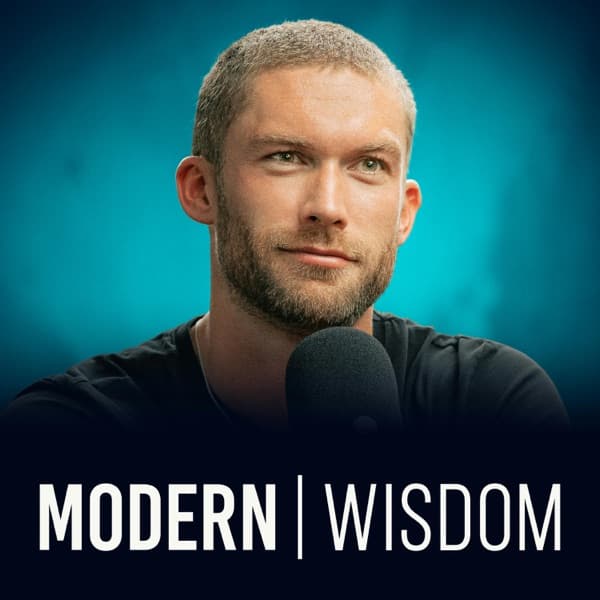
The conversation delves into the intricacies of bullying, emphasizing the role of power dynamics and the motivations behind bullying behavior. It highlights that bullying is often a systematic abuse of power, with popular kids being more resistant to interventions due to their reluctance to relinquish power. The discussion also touches on the neurobiological effects of bullying on victims, noting that it can have long-lasting impacts on mental health and social functioning. The conversation further explores the differences in bullying behavior between boys and girls, with boys being more direct and girls using relational aggression. Additionally, the discussion addresses the challenges in implementing effective anti-bullying interventions, noting that current efforts only achieve a 20% reduction in bullying. The conversation concludes by emphasizing the need for more research on the positive outcomes for those who overcome bullying and the importance of addressing power dynamics in interventions.
Key Points:
- Bullying is often driven by power dynamics, with popular kids being more resistant to interventions.
- Bullying has profound neurobiological effects on victims, impacting mental health and social functioning.
- Current anti-bullying interventions are only about 20% effective, highlighting the need for better strategies.
- Boys tend to use direct aggression, while girls use relational aggression in bullying.
- Understanding the motivations and power dynamics behind bullying is crucial for developing effective interventions.
Details:
1. 🎓 Academic Journey into Bullying
1.1. Power Dynamics in Academic Bullying
1.2. Prevalence and Impact of Bullying
1.3. Strategies for Mitigating Bullying
2. 🔍 Evolution of Bullying Research
- Research in evidence-based bullying intervention has progressed over 25 years, mainly through correlational studies due to the challenge of conducting experimental research on bullying.
- Dan Ove conducted the largest longitudinal and intervention study in Norway, achieving a 50% reduction in bullying by involving the entire country.
- Boys identified as bullies in grade nine were found to have a significant likelihood of criminal justice involvement by age 24.
- Research expanded to consider broader contexts, such as school-related factors and family environments, beyond individual factors.
- Focus on the neurobiology of bullying aimed to demonstrate its profound impact, countering the notion that victims simply need to be more resilient.
- Despite progress, more research is needed on the neurobiological effects of bullying, as it is a significant psychosocial stressor.
3. 💪 Power Dynamics and Their Impact
3.1. Research Directions in Bullying
3.2. Intervention Efficacy
3.3. Power Dynamics in Bullying
3.4. Motivations for Bullying
4. 🧠 Understanding Bullies: Motivations and Traits
- Approximately 10% of kids under 18 exhibit emotional dysregulation, such as ADHD or conduct disorder, often referenced as 'Nelsons' from The Simpsons, but they do not represent the majority of bullies.
- Kids with valued assets and competencies, like being good-looking or athletic, are often afforded power, which can lead to abusive behavior to maintain dominance.
- This power dynamic leads to the establishment of school norms based on the behavior of these dominant kids, affecting the whole environment, not just the individual.
- 90% of kids who bully others do so due to the corrupting influence of power, not because of inherent dysfunctions.
5. 🔍 Outcomes of Bullying: Success and Social Dynamics
- Implicit power is achieved through competencies and valued assets without abuse, while explicit power involves coercion, fear, and compliance.
- Bullies often possess a mix of implicit and explicit power, showcasing redeeming qualities such as strategic thinking and interpersonal exploitation.
- There is a lack of understanding about individuals who wield only implicit power but maintain significant influence within social settings, particularly in school communities.
- Research distinguishes between leaders who are kind and those who tend toward cruelty upon gaining power, emphasizing the complexity of social dynamics in power acquisition.
- Examples of implicit power include individuals who excel academically or athletically, gaining respect and influence without resorting to bullying.
- Case studies illustrate how individuals with implicit power can positively impact their communities, contrasting with those who employ explicit power negatively.
6. 🎭 Bullying Dynamics and Victim Profiles
- Individuals high in the dark triad (narcissism, Machiavellianism, psychopathy) are socially skilled and justify their behavior, contradicting past studies suggesting lifelong negative outcomes for bullies.
- Longitudinal study (16 years) shows bullies often become successful adults, blending pro-social and antisocial traits to avoid social rejection.
- Attractiveness and athletic ability enable bullies to escape social consequences, while those lacking such traits, like Nelson, face peer rejection.
- Bullies may possess higher emotional intelligence and general intelligence, aiding in their interpersonal manipulation and social navigation.
- Bullies often come from privileged backgrounds, possessing attributes such as athleticism, good looks, and wealth.
7. 🌐 Bullying Across Cultures and Contexts
- Bullying behavior is often linked to a combination of disagreeability and assertiveness, leading to a heightened sense of entitlement and power wielding.
- Effective leadership typically involves a balance of prestige and dominance, exemplified by figures like Donald Trump, who, despite controversial views, demonstrates assets and competencies.
- Anxiety usually acts as a restraint, preventing most individuals from crossing social and ethical boundaries; however, those with psychopathic traits may lack this restraint.
- Individuals characterized by high psychopathic features and everyday sadism often disregard social norms and ethical boundaries, contributing to their bullying behavior.
8. 🚸 School Environment and Bullying Mechanisms
- Bullying involves specific aggressive behaviors characterized by power imbalances, with bullies using aggression in atypical, frightening ways that lead to mistaken interpretations of fear as respect.
- Unlike general aggression, bullying requires repeated incidents and involves a power differential, distinguishing it from isolated aggressive acts.
- Children from dysfunctional homes may exhibit more aggressive behaviors, but this does not directly correlate with being bullies.
- Bullying is linked to specific profiles, notably those with higher dark triad traits, challenging the misinterpretation of bullying as merely a reaction to abnormal upbringing.
- Victims are significantly impacted due to their inability to defend themselves, suffering long-term disadvantages.
- Two distinct profiles of bullies are observed: one with prefrontal dysfunction and reactive aggression leading to social rejection, and another with perceived superiority, assets, and lower anxiety, showing indifference to the mistreatment of others.
- Understanding these dynamics is crucial for developing effective preventive measures and school policies to address bullying effectively.
9. 📊 Bullying Statistics and Effects on Victims
9.1. Prevalence of Bullying
9.2. Impact on Bullies
9.3. Characteristics of Bullying Victims
9.4. Mechanisms and Societal Impact of Bullying
10. ⚖️ Body Image, Ethnicity, and Bullying
10.1. Bullying Dynamics and School Environment
10.2. Ethnicity and Bullying Patterns
11. 👫 Gender Differences in Bullying
- Overweight and obese children are more likely to be bullied, and bullying can lead to weight gain due to depression and overeating.
- Both boys and girls face bullying based on body image, but the mechanisms differ: boys are bullied for being insufficiently masculine, while girls face bullying from intersexual competition.
- A study published in JAMA found poor mental health in both underweight and overweight children, with overweight children being more affected.
- Boys' bullying is more direct, focusing on dominance and submission, while girls use relational aggression, involving social exclusion and rumor-spreading.
- Girls start using indirect aggression at a very young age, even as toddlers, while boys use both direct and indirect methods.
- Society tolerates indirect aggression more, and girls' superior verbal and social skills allow them to effectively use this form of bullying.
- Cross-sex bullying is more prevalent in younger children and decreases as they age and become more interested in dating.
12. 💸 Family Dynamics, Poverty, and Child Development
- Sex differences in brain development are observable as early as three to six months gestation, with fMRI showing 93% to 95% accuracy in identifying male or female brains by age 10, similar to facial recognition accuracy.
- Children's play often reflects traditional gender roles, with girls engaging in nurturing activities and boys in competitive or combative play, suggesting deep-rooted biological influences despite societal changes.
- A study on indirect aggression in two-year-olds found that 80% exhibited 'love withdrawal,' a form of relational aggression, indicating that sophisticated social behaviors manifest early in development.
- The presence of antisocial behavior in fathers can negatively impact children's outcomes, supporting the idea that family dynamics and parental behavior significantly affect child development.
- The discussion highlights the complexity of maintaining family units, noting that while stable families can offer advantages, the quality of parental relationships is crucial for modeling healthy attachments for children.
- Poverty is identified as a significant factor affecting child development, with the stress of poverty altering children's brain development and potentially leading to poorer outcomes.
- The narrative suggests that interventions should focus on improving the quality of parental relationships and addressing economic challenges to support better developmental outcomes for children.
13. 🏳️🌈 Vulnerable Groups: LGBT Youth and Moral Disengagement
13.1. Bullying and Mental Health of LGBT Youth
13.2. Societal Care for Vulnerable Groups and Health Monitoring
13.3. Moral Disengagement and Bullying Dynamics
14. 🧠 Long-term Effects and Biological Responses to Bullying
14.1. Impact on Victims
14.2. Biological Vulnerabilities and Stress Response
14.3. Research and Prevention Strategies
15. 🔄 Overcoming Bullying and Intervention Strategies
- Cognitive behavioral therapy is recommended for helping individuals overcome the negative impacts of bullying, offering a structured approach to change thought patterns.
- Research shows that reducing bullying can sometimes increase the intensity of bullying for remaining victims, exacerbating their mental health issues, a phenomenon known as the 'healthy context paradox.'
- Efforts to reduce bullying show a maximum reduction of 20%, with interventions being more effective in younger students than in high school students, indicating the need for age-specific strategies.
- Whole school approaches, involving multiple components like student engagement and staff training, are more effective than singular methods, emphasizing the importance of comprehensive strategies.
- High-status students often set social norms, complicating efforts to change bullying behaviors, highlighting the need for targeted interventions among influential groups.
- Many interventions do not address the entrenched nature of bullying behaviors as children age, indicating a need for evolving strategies that adapt to developmental stages.
16. 👥 School Safety: Supervision and Environment
16.1. Socialization and Targeted Interventions
16.2. Effectiveness of Anti-Bullying Programs
16.3. Moral Engagement and Memory Impact
16.4. Role of Supervision in Reducing Bullying
17. 📚 Parental Influence, Workplace Bullying, and Future Research Directions
- Increased supervision and spatial planning in schools can mitigate bullying, especially in unsecured areas like bathrooms.
- Parents who experienced bullying may pass on threat sensitivity to their children, influencing how they perceive and react to potential bullying situations.
- Children of bullied parents may become more guarded, affecting their social interactions and increasing the risk of being bullied themselves.
- There is continuity in bullying from childhood to adulthood; bullied children often face similar issues in workplaces and relationships.
- Self-reports and biases can skew perceptions of bullying, where past victimization influences how individuals interpret social interactions.
- 'Victim shopping' is a strategy used by bullies to identify and exploit individuals based on their reactions.
- Future research should focus on both improving the social skills of potential victims and changing the behavior of perpetrators.
How I Built This with Guy Raz - Advice Line with Travis Boersma of Dutch Bros

The episode provides insights into scaling businesses, featuring Travis Boersma of Dutch Bros Coffee. Travis shares his journey from starting with an espresso cart to expanding to over 900 locations. He emphasizes the importance of maintaining company culture and choosing a growth model that aligns with business values, opting for a corporate-owned model over franchising to preserve culture. The episode also includes advice for entrepreneurs like Sean Chang of Mocha Korean Fried Chicken, who is navigating delivery app challenges, and Yasmin Santos of Alter Native Bar, who is exploring non-alcoholic beverage markets. The discussions highlight the importance of adapting to market changes, leveraging unique selling propositions, and using creative marketing strategies to build brand awareness and customer loyalty.
Key Points:
- Focus on maintaining company culture when scaling; Dutch Bros chose a corporate-owned model to preserve culture.
- Adapt to market changes and choose a growth model that aligns with your business values.
- Leverage unique selling propositions to differentiate your brand, like Mocha Korean Fried Chicken's fusion cuisine.
- Use creative marketing strategies, such as word-of-mouth and social media, to build brand awareness.
- Consider product diversification and exploring new markets, as seen with Alter Native Bar's non-alcoholic beverages.
Details:
1. 🎧 Wondery Plus and Sponsorship Messages
- Wondery Plus offers early and ad-free listening for How I Built This, accessible via the Wondery app or Apple Podcasts.
- Vital Proteins addresses age-related collagen reduction, enhancing hair, skin, nails, bones, and joints, being the leading US brand for collagen peptides.
- A 20% discount is available for Vital Proteins products at www.vitalproteins.com using promo code BUILT.
2. 💼 Investing Insights and Business Solutions
2.1. Schwab Investing Themes
2.2. American Express Business Platinum Card
3. 📞 Welcome to The Advice Line
- The Advice Line aims to solve business challenges with insights from legendary founders.
- Listeners are invited to call 1-800-433-1298 with a one-minute message about their business issues.
- Participants may become guests on the show, receiving tailored advice from experienced entrepreneurs.
- Voice memos can also be sent to hibt at id.wondery.com with contact details included.
- A free newsletter with insights from top entrepreneurs is available at GuyRoz.com or on Substack.
4. ☕ Dutch Bros Journey: From Cart to Chain
- Dutch Bros has expanded to 975 locations across the United States, showcasing significant growth from its origins as a small coffee cart operation.
- The company's growth strategy emphasizes taking incremental steps, which has been a key factor in its expansion and success.
- Each new location is carefully chosen to maximize local market penetration, ensuring sustainable growth.
- Dutch Bros prioritizes community engagement and cultural fit in new markets, which enhances brand loyalty and customer retention.
- The expansion has been supported by a strong franchise model, allowing for rapid yet controlled growth into new regions.
- Dutch Bros' strategic focus on creating a unique customer experience has differentiated it from competitors, contributing to its widespread popularity.
5. 🚀 Transitioning Business Models at Dutch Bros
- Dutch Bros began as an espresso cart in a parking lot, highlighting the initial low-cost setup and entrepreneurial spirit.
- Transitioning to a brick-and-mortar store introduced complexities such as higher fixed costs and the need for a larger workforce, reflecting a significant operational scale shift.
- The adoption of a drive-thru model was a major innovation, setting Dutch Bros apart in the coffee industry and serving as a core differentiator.
- This drive-thru model evolved into the establishment of permanent brick-and-mortar locations, marking a strategic development in their business model.
- Dutch Bros' decision to move away from a franchise model likely aimed at maintaining greater control over operations, branding, and quality consistency.
- These transitions have contributed to Dutch Bros' growth, positioning them as a leading player in the coffee chain market.
6. 🔍 Scaling and Culture at Dutch Bros
- Dutch Bros operates on a corporate-owned model where shops are managed by employees promoted through the ranks, aligning with companies like Chick-fil-A and In-N-Out.
- In 2008, Dutch Bros decided to grow solely from within and stopped selling franchises, focusing on internal promotion to maintain and scale company culture.
- The decision to avoid franchising, a common model for rapid growth, emphasizes teaching and scaling company culture over business acumen alone.
- Despite the corporate-owned model requiring more capital and eventually leading to outside investment, Dutch Bros managed to grow rapidly.
- Dutch Bros resisted outside investment for about 25 years, highlighting a strategic choice rather than a necessity in their growth approach.
- The company's growth strategy prioritizes cultural alignment and employee development over traditional franchise models, indicating a unique path in the quick-service industry.
7. 🍗 Mocha Korean Fried Chicken: Overcoming Challenges
7.1. Introduction and Business Concept
7.2. Unique Cooking Methods and Business Origins
7.3. Challenges with Delivery Platforms
7.4. Current Financial Situation and Future Strategies
8. 📈 Marketing Strategies for Mocha Korean Fried Chicken
8.1. Corporate Partnerships and Product Expansion
8.2. Referral and Email Marketing Strategies
8.3. Social Media Marketing Challenges
9. ☕ Pine Ridge Coffee: Expanding Horizons
9.1. Overcoming Challenges
9.2. Business Model and Location
9.3. Origin Story and Entrepreneurial Drive
9.4. Market Expansion Challenges
9.5. Product Offerings and Brand Story
10. 🚚 Wholesale vs. Direct-to-Consumer for Pine Ridge
10.1. Long-term Business Vision
10.2. Unique Selling Proposition
10.3. Brand Expansion Strategy
10.4. Learning from Competitors
10.5. Market Focus
11. 🌿 Alter Native Bar: A New Beverage Experience
11.1. Introduction to Alter Native Bar
11.2. Product Offerings and Concept
11.3. Target Market and Clientele
11.4. Business Expansion and Strategy
12. 📊 Scaling Alter Native Bar to Mainstream
12.1. Education and Momentum
12.2. Long-Term Strategy and Product Evolution
12.3. Opportunities in Event Marketing
12.4. Embrace Discomfort and Innovation
12.5. Product Simplicity and Storytelling
12.6. Strategic Patience and Market Timing
12.7. Financial Planning and Brand Building
12.8. Continuous Improvement and Customer Connection
13. ✨ Closing Thoughts and Encouragement
- Alcohol consumption is in decline in the United States, presenting opportunities for alternative beverages like nootropics and brain-enhancing herbs.
- The advice 'adapt or die' emphasizes the importance of flexibility and resilience in business, especially in unpredictable situations like the COVID-19 pandemic.
- Travis Borsma, co-founder of Dutch Bros Coffee, highlighted the significance of staying adaptable in the face of unexpected challenges.
- Listeners are encouraged to engage with the podcast by sharing their business stories and challenges, with an opportunity to receive advice and support.
Masters of Scale - Building a network of mentors, with Cadre’s Ryan Williams
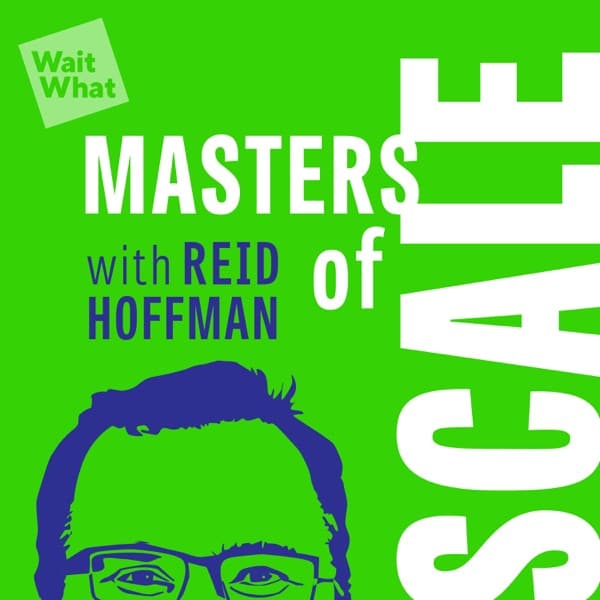
Atio is a customer relationship management (CRM) system built for the future, specifically designed to adapt to the unique operational needs of modern companies. It integrates seamlessly with organizational emails and calendars, providing a scalable solution that grows with any business model. The platform's standout feature is its AI-powered automations and research agent, which help tackle complex processes, allowing businesses to focus on growth and development. Additionally, Atio offers a promotional discount of 15% off the first year for new users, emphasizing its commitment to accessibility and value.
Key Points:
- Atio is AI-native, designed for modern business needs.
- It integrates with emails and calendars for seamless operation.
- Offers AI-powered automations to simplify complex processes.
- Scalable to fit any business model, ensuring growth.
- 15% discount for first-year users, enhancing accessibility.
Details:
1. 🌟 Atio: Revolutionizing CRM for the Future
- Atio is an AI-native CRM tailored for future businesses, providing adaptability to unique operational needs and scalability with various business models.
- The system integrates seamlessly with organizational emails and calendars, ensuring efficient synchronization.
- Atio empowers businesses through AI-powered automations and a research agent that manages complex processes, freeing resources to focus on growth initiatives.
- Unlike competitors, Atio's unique AI capabilities provide a strategic advantage in customer relationship management.
- Current promotional offer: 15% off the first year subscription available at atio.com/MOS.
2. 🚀 Opportunities for Impactful Executives
- Applications are officially open for world-changing executives and impactful investors to join a unique lineup and audience handpicked for impact.
- The event promises an unmatched lineup and a departure from business as usual, presenting a significant opportunity for networking and influence.
- Executives and investors are encouraged to apply now at mastersofscale.com/apply25 to not miss out on this opportunity.
3. 🏠 Ryan's Real Estate Awakening: A Student's Perspective
- Ryan Williams identified an opportunity in the 2008 housing crash by observing widespread foreclosures in Atlanta and recognizing a market gap for community-focused investment.
- He successfully raised capital from classmates to purchase foreclosed homes, demonstrating resourcefulness and leadership in pooling resources from peers.
- Ryan implemented a unique strategy by renting these homes back to community members, which helped those affected by predatory lending while generating steady rental income.
- A notable achievement was selling a home back to its previous owner, which validated his business model and emphasized a commitment to community support.
- He developed a profound passion for real estate through hands-on community investment and addressing the needs of affected individuals, fostering a sustainable social impact.
- Ryan founded a company to scale his real estate ventures, learning about increased competition and market dynamics, which honed his entrepreneurial skills.
- Despite initial success, he faced challenges such as heightened competition and operational complexities, leading to valuable insights and experience.
- Eventually, Ryan decided to exit the business, armed with a comprehensive understanding of real estate and a reinforced passion for helping communities.
4. 🌱 From Humble Beginnings to Entrepreneurial Success
- Ryan founded Cadre in 2014, a tech-powered commercial real estate investment platform, and recently sold it, marking a significant milestone in his entrepreneurial journey.
- The success of Cadre highlights the importance of assembling incredible talent across all positions within a company.
- Ryan's entrepreneurial journey began in his teenage years, underscoring the value of early entrepreneurial experiences in shaping future successes.
- A significant challenge faced was navigating the competitive commercial real estate market, which required innovative strategies and adaptability.
- Key strategies contributing to Cadre's success included leveraging technology to streamline real estate investments and focusing on a customer-centric approach.
- Understanding market conditions and maintaining flexibility in business strategies were crucial to overcoming industry challenges.
5. 🏢 Cadre: Democratizing Real Estate Investment
- The entrepreneur's early experiences in Baton Rouge, a city divided economically and physically, shaped his understanding of entrepreneurship as overcoming barriers and adversity.
- His initial entrepreneurial attempts included a bait and tackle shop that failed, but his first successful venture was a personalized sports apparel business at the age of 13.
- He started customizing headbands and wristbands due to a personal need and expanded the business by finding a local embroiderer for custom designs, which showed him market potential.
- The business caught the attention of the National Foundation for Teaching Entrepreneurship, leading to participation in a national business plan competition.
- He won first place in the competition, earning a $10,000 grant and access to mentors, marking a pivotal moment in his entrepreneurial journey.
- The mentorship and competition success led to his application to Harvard, becoming the first in his family to attend, representing a significant personal and professional milestone.
6. 📰 Navigating Media and Political Challenges
7. 🤝 Building a Network of Trust and Success
7.1. Introduction and Call to Action
7.2. Ryan Williams - Real Estate Ventures Amidst Financial Crisis
7.3. Key Learnings from Real Estate Experiences
7.4. Ryan Williams - Entrepreneurial Journey
7.5. Inspiration and Foundation of Cadre
7.6. Democratizing Real Estate with Cadre
7.7. Opportunities from the Financial Crisis
7.8. From Finance to Entrepreneurship
7.9. Building Cadre - Technology and Strategic Partnerships
8. 🔗 Strategic Partnerships and Cadre's Sale
8.1. 🛡 Building a Distribution Moat through Strategic Partnerships
8.2. 📰 Navigating Media Attention and Political Connections
9. 🚀 A New Chapter: Ryan's Future Ventures
- Ryan learned the importance of choosing the right advisors, with Vinod Khosla emphasizing the need to know 'who to listen to for what advice.'
- Building a strong advisory network requires a symbiotic relationship, offering value in return, not just seeking help.
- Consistent communication with stakeholders is crucial; Ryan allocated six hours for one-on-ones to address team concerns and maintain focus.
- Transparency and openness are core values that Ryan maintained, ensuring stakeholders were informed and engaged.
- Ryan shared insights and trends with advisors to keep them informed, which helped strengthen relationships.
- Delivering on commitments and consistent follow-ups helped build trust and expanded Ryan's network through referrals.
- Ryan's decision to sell his company was one of the toughest, highlighting how professional identity can become linked to one's company.
- The decision to sell was influenced by a strategic evaluation of future growth opportunities and personal goals.
- Post-sale, Ryan plans to leverage his network and experience to explore new ventures and innovations.
10. 🎧 Reflecting on Growth and Future Prospects
10.1. Strategic Partnership and Business Growth
10.2. Entrepreneurial Journey and Future Outlook
10.3. Community and Employee Engagement
TechCrunch Startup News - Chestnut Carbon gets $160M to turn old farms into forests

Chestnut Carbon, a nature-based carbon removal startup, has secured $160 million in Series B financing to expand its operations. The company focuses on buying marginal and degraded farmland, planting native trees, and generating carbon credits. These credits are in high demand, especially among tech companies aiming to offset emissions from data centers. The funding round included investments from notable entities like the Canada Pension Plan Investment Board and DBL Partners. Chestnut plans to increase its carbon credit capacity to 100 million metric tons by 2030, requiring significant land transformation. Recently, they sold 7 million carbon credits to Microsoft, aiding in the rehabilitation of 60,000 acres in the southeastern U.S. The company uses Gold Standard certification for its credits, ensuring quality and longevity. Despite the ambitious goals, Chestnut's target represents a small fraction of global emissions, but it highlights the potential of afforestation and reforestation in combating climate change.
Key Points:
- Chestnut Carbon raised $160 million to expand carbon credit projects.
- The startup transforms degraded farmland into forests to generate carbon credits.
- Carbon credits are in demand, especially from tech companies offsetting emissions.
- Chestnut aims to expand its carbon credit capacity to 100 million metric tons by 2030.
- The company recently sold 7 million carbon credits to Microsoft for land rehabilitation.
Details:
1. 📱 Unveiling Samsung Galaxy S25 Ultra: Your AI Companion
1.1. AI Companion Features
1.2. Hands-Free Operation
1.3. Enhanced User Experience and Comparisons
2. 🌳 Chestnut Carbon's $160M Series B: Leading Carbon Credit Innovation
2.1. Series B Financing and Market Context
2.2. Investment Details
2.3. Strategic Expansion
2.4. Growth Objectives and Achievements
2.5. Market Potential and Environmental Impact
3. 🎙️ Personal Finance Podcast: Your Guide to Financial Success
- The podcast, hosted by Andrew G. Nkola, offers practical tips on wealth building and creating multiple income streams.
- The episode 'The Six Numbers You Must Know to Build Wealth' highlights essential financial metrics critical for wealth creation.
- Key steps include understanding your net worth, tracking monthly expenses, and setting clear financial goals.
- The podcast simplifies financial planning, making it approachable and boosting confidence in financial decisions.
- Available on major platforms like Apple Podcasts and Spotify, it advocates for transforming personal finances and making money work for you.
TechCrunch Startup News - Voyantis aims to help companies figure out their customers’ worth

Voyantis, founded by Ido Weissenberg and Eran Friedinger, offers AI-driven tools to predict customer lifetime value and optimize marketing strategies. The platform analyzes thousands of data points to forecast customer behavior and value, feeding these insights into ad networks and marketing platforms. This helps businesses make informed decisions about customer acquisition, retention, and upselling. Voyantis emphasizes data privacy by storing only anonymous usage data. The company has seen significant growth, tripling its annual recurring revenue for two years and raising $60 million in funding to expand its team and enhance product R&D. It targets industries like fintech, mobile apps, and direct-to-consumer markets, aiming to support efficient growth in a changing economic landscape.
Key Points:
- Voyantis predicts customer lifetime value using AI, enhancing marketing strategies.
- The platform feeds predictions into ad networks to optimize customer interactions.
- Voyantis prioritizes data privacy, storing only anonymous data.
- The company has tripled its revenue for two consecutive years.
- Voyantis raised $60 million to expand its team and product development.
Details:
1. 📱 Samsung Galaxy S25 Ultra: The AI Game Changer
- The Samsung Galaxy S25 Ultra includes advanced AI capabilities that allow users to perform voice-activated tasks such as finding and texting restaurant information, significantly enhancing user convenience and interaction with the device.
- The device is designed for hands-free operations, which promotes multitasking and efficiency. An example is the ability for users to perform physical exercises like squats while concurrently interacting with the phone, demonstrating the practical applications of its AI technology.
- The Galaxy S25 Ultra is marketed as an AI companion, focusing on its ability to simplify daily tasks and improve user productivity, allowing users to shift their focus towards personal activities without technological interruptions.
2. 🔍 Voyantis: Pioneering Customer Lifetime Value with AI
2.1. Introduction to Voyantis and Its Founders
2.2. AI-Driven Features and Benefits of Voyantis
3. 🚀 Voyantis' Growth and Strategic Funding
- Voyantis raised $41 million in a funding round led by Intel Capital, bringing their total capital to $60 million.
- The company plans to invest in product R&D and expand their Tel Aviv-based team, which currently consists of about 70 people, to drive innovation and growth.
- This funding coincides with a growing demand for efficient growth solutions as economic conditions evolve, highlighting the strategic timing of this investment.
- Voyantis is strategically targeting commercial enterprises within fintech, mobile apps, direct-to-consumer, and product-led growth sectors to maximize market impact.
4. 🎙️ Personal Finance Podcast: Your Guide to Financial Freedom
- Hosted by Andrew Giancola, The Personal Finance Podcast offers a detailed masterclass in money management, wealth building, and achieving financial freedom.
- The podcast emphasizes actionable strategies, including innovative investment approaches and passive income generation, rather than merely cutting back on minor expenses.
- A highlighted episode, '25 Things to Do With Your Money in 2025,' provides listeners with a structured financial plan tailored for future economic conditions.
- Listeners can enhance their financial literacy by accessing The Personal Finance Podcast on platforms like Apple Podcasts and Spotify, making it a valuable resource for both beginners and seasoned investors.
Included Channels
 Masters of Scale
Masters of Scale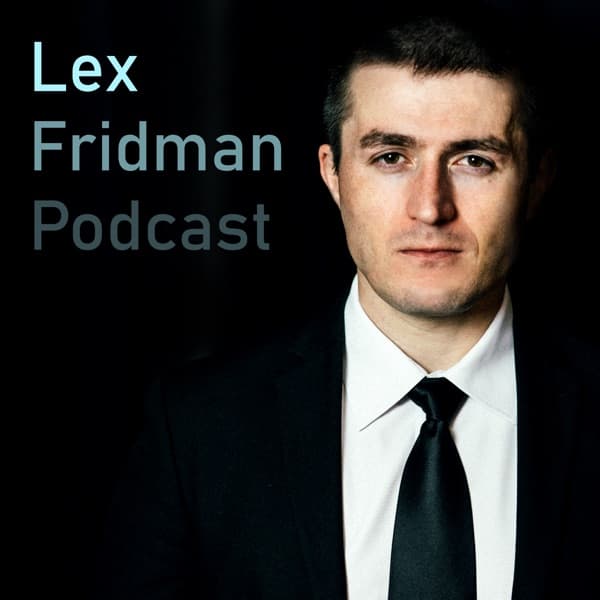 Lex Fridman Podcast
Lex Fridman Podcast All-In with Chamath, Jason, Sacks & Friedberg
All-In with Chamath, Jason, Sacks & Friedberg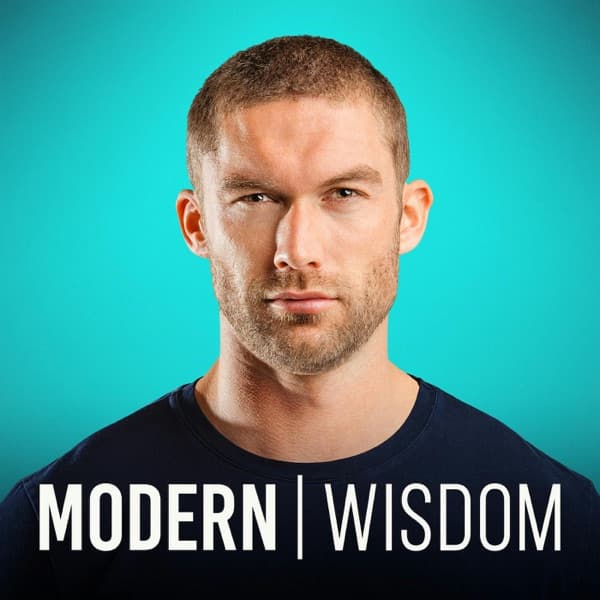 Modern Wisdom
Modern Wisdom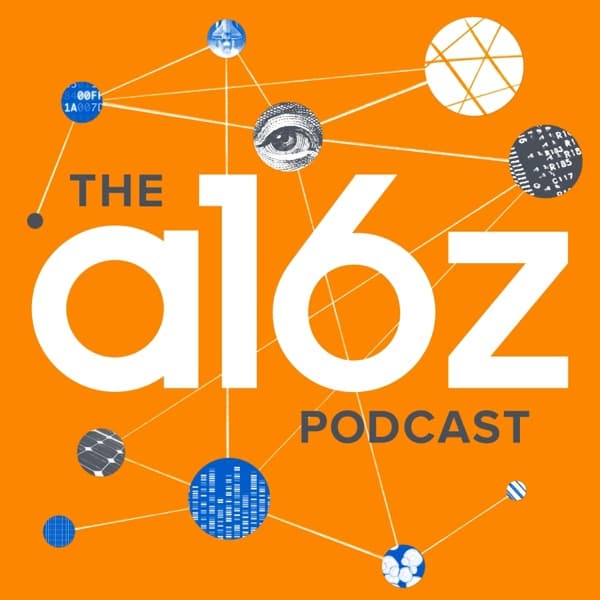 a16z Podcast
a16z Podcast Lenny's Podcast: Product | Growth | Career
Lenny's Podcast: Product | Growth | Career No Priors AI
No Priors AI The Twenty Minute VC (20VC): Venture Capital | Startup Funding | The Pitch
The Twenty Minute VC (20VC): Venture Capital | Startup Funding | The Pitch How I Built This with Guy Raz
How I Built This with Guy Raz BG2Pod with Brad Gerstner and Bill Gurley
BG2Pod with Brad Gerstner and Bill Gurley TechCrunch Startup News
TechCrunch Startup News Y Combinator Startup Podcast
Y Combinator Startup Podcast


